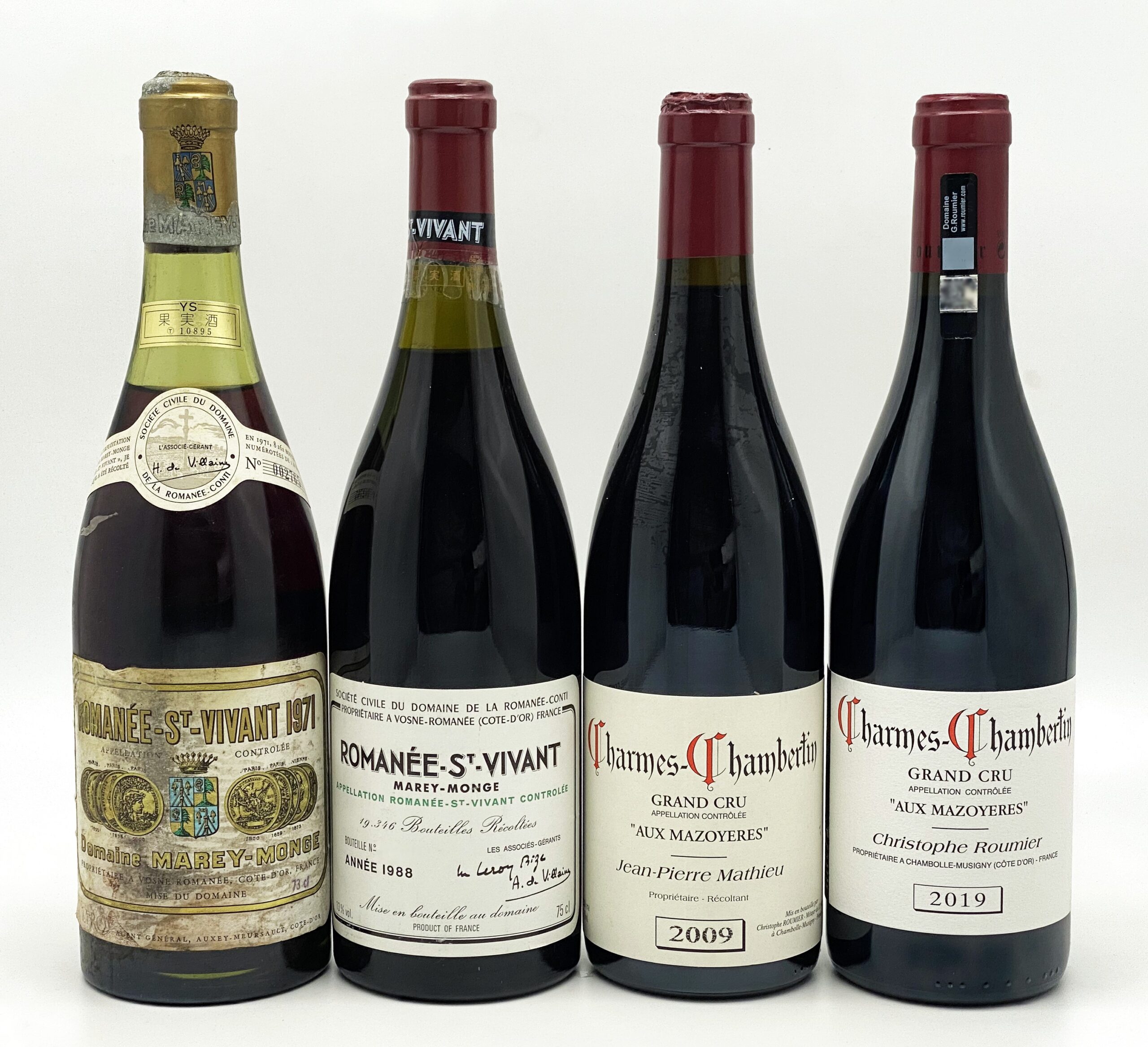In Burgundy, there are a small number of bottles of nearly identical wines bottled but with different labels that are half the price of the bottles in circulation.
Subdivision of fields
Before the French Revolution, the church and the nobility owned the vineyards of Burgundy. The first recorded church ownership of vineyards dates back to 587 when Guntram, grandson of Clovis, donated vineyards to the abbey of Saint-Bénigne in Dijon, and in 630, the sovereign of the Duchy of Lower Burgundy donated vineyards in Juvre-Chambertin, Vosne-Romanée and Beaune to the abbey of Beze The abbey of Saint-Vivant was founded in 1830. In 1232, the Abbey of Saint-Vivant received a grant from the Grand Duchess of Burgundy of the vineyards that are now Romanée-Conti, La Romanée, La Tache, Richebourg, and Romanée-Saint-Vivant. As can be seen from the 50 hectares of Clos de Vougeot cultivated by the Cistercian Order between the 12th and 14th centuries, the vineyards of this period were relatively large and were owned and managed by a single owner.
Throughout the Middle Ages, most of the vineyards in Burgundy were owned by the church and the nobility, but the French Revolution of 1789 changed this situation. The church and aristocratic vineyards confiscated by the Revolution were put up for public sale from 1791, but because the buyers, the citizens, did not have sufficient funds, the vineyards were divided up and auctioned off. In addition, the Napoleonic Code of 1804, which enforced a system of equal inheritance instead of the firstborn, led to the subdivision of the vineyards as time went on, until the current situation of more than 80 people owning 50 hectares of Clos de Vougeot.
Land Lease Agreements for Fields
As time went on, when the heirs could no longer live solely on the proceeds of the vineyards, which were subdivided like a cat's forehead by this system of equal inheritance, it became common for the vineyards to be leased out to other vine growers and wine producers (domaines) while the heirs took up other occupations. There are two types of vineyard leases widely practiced in Burgundy: leasehold cultivation, known as fermage, and semi-leased cultivation, known as metage. In a fermage, the tenant bears all the costs of cultivation, but if he or she pays the landowner a cash rent, the tenant owns all the grapes harvested. The Burgundy-specific metage, on the other hand, is a bit more complicated: the landowner bears the costs of the vineyard property (replanting vines, poles, wires, etc.), but usually receives half of the harvest as rent. This rent can be received in the form of grapes, wine in barrels, or finished wine in bottles, depending on mutual agreement. In socialist France, where the rights of tenant farmers are strictly protected by law, these vineyard leases are usually for nine years, but can automatically continue until the tenant retires. Currently, it is estimated that about one-third of all vineyard acreage in Burgundy is farmed under these leases, and this is the main reason for the lack of liquidity in the vineyards.
Henri Jayer, the spiritual leader of Burgundy who died of prostate cancer in September 2006 at the age of 84, was engaged in metallurgy, renting a parcel of Echézeaux inherited by his brother Georges Jayer, who was engaged in forestry, and cultivating it on an equal basis, paying a portion of the finished wine as a lease fee. A portion of the resulting wine was paid to Georges Jayet as a rent. The bottles thus given to Georges Jayer are at first glance indistinguishable from Henri Jayer's Echézeaux, but bottles with the Georges Jayer label usually sell for about half the price of those with the Henri Jayer label. As a general rule, it is the tenant who decides which of the barrels of wine vinified by the half-cultivation will be given to the landowner as rent, and for this reason it is said that the tenant will keep the best barrels on hand.
concrete example
Typical examples of fermages (rented cultivation) that continue to this day include Corton (red), vinified by Domaine de la Romanée-Conti (DRC) on lease from Domaine Prance Florent de Merode, and Corton Charlemagne, also on loan from Domaine Bonneau du Martelay, by DRC. Corton Charlemagne is one example. Domaine Coche-Durie's top brand is Corton-Charlemagne, a leading Burgundy white producer, but this parcel was cultivated and vinified in Fermage from 1986 to the 2011 vintage, and was only acquired by Coche-Durie in 2012. One of the top brands of Robert Chevillon, one of the leading domains in Nuits-Saint-Georges, is the first-class Les Saint-Georges vineyard, which is still vinified under rented cultivation. The lease is favorable to the tenant in today's booming market, as all of the grapes harvested by the fermage can be sold by the tenant.
On the other hand, examples of metageage (half-cultivation) that continue today include the Echézeaux vinified by Emmanuel Rouget, who took over the contract from Henri Jayer, from a parcel owned by the Georges Jayer family, and Christophe Roumier of Domaine Georges Roumier, who leases a parcel from Jean-Pierre Mathieu, the owner of the parcel. There is also Charme-Chambertin Haut-Mazoyer, which is farmed and vinified by Christophe Roumier of Domaine Georges Roumier on lease from Jean-Pierre Mathieu, the owner of the plot, and Luchot-Chambertin, which is also vinified by Christophe Roumier on lease from Michel Bonnefont. Because the name of the producer who vinified the wine is not usually indicated on the bottle given to the vineyard owner as land rent, and the names of these vineyard owners are not generally recognized, these wines can be purchased at relatively low prices, even though they are almost identical.


